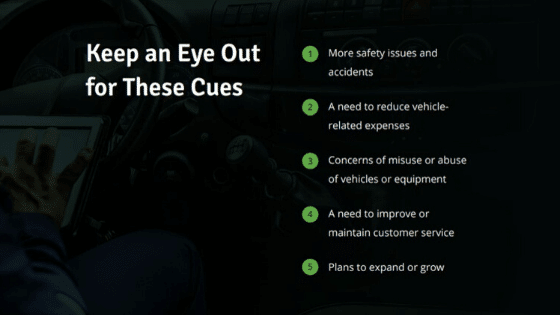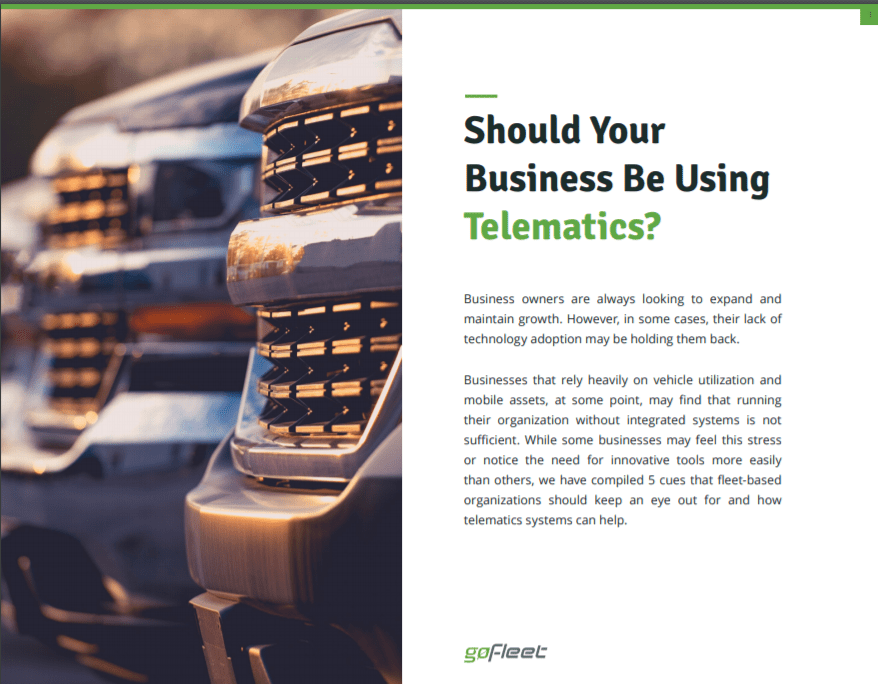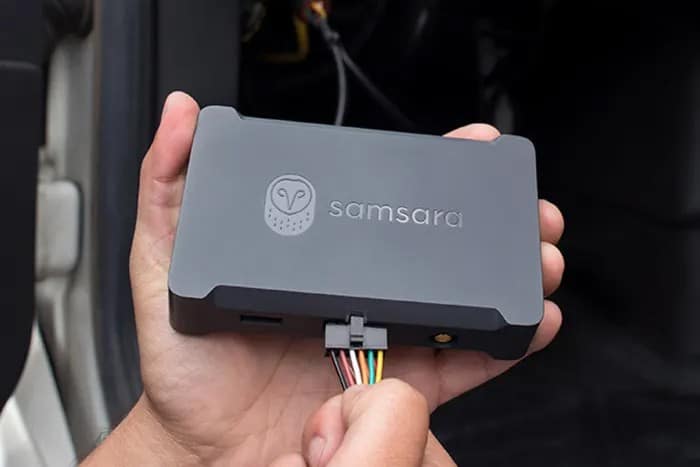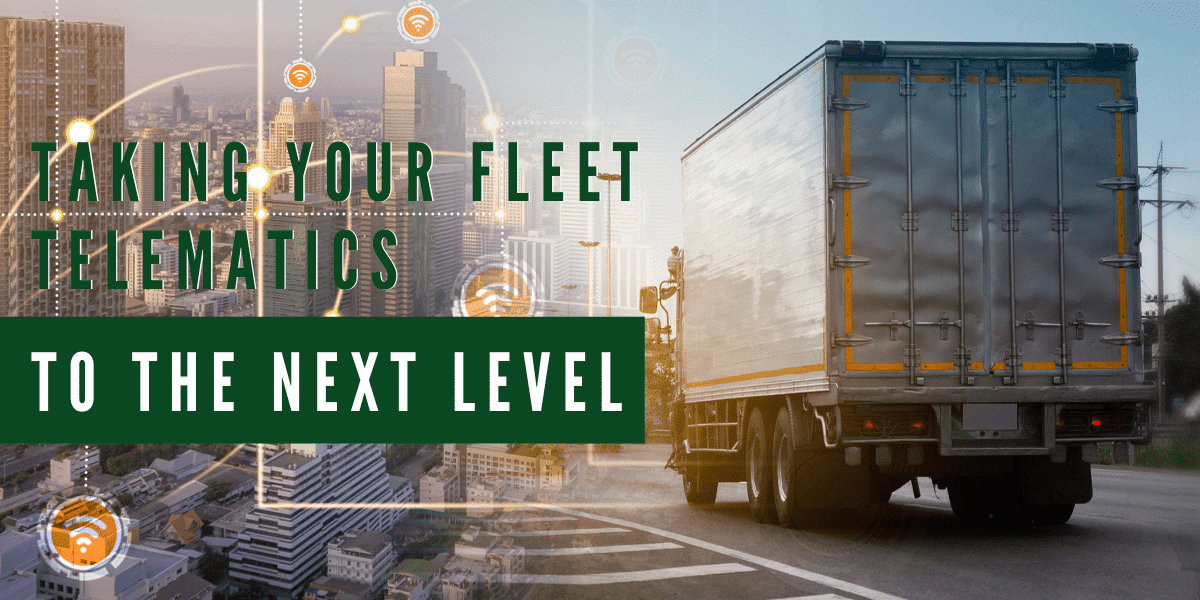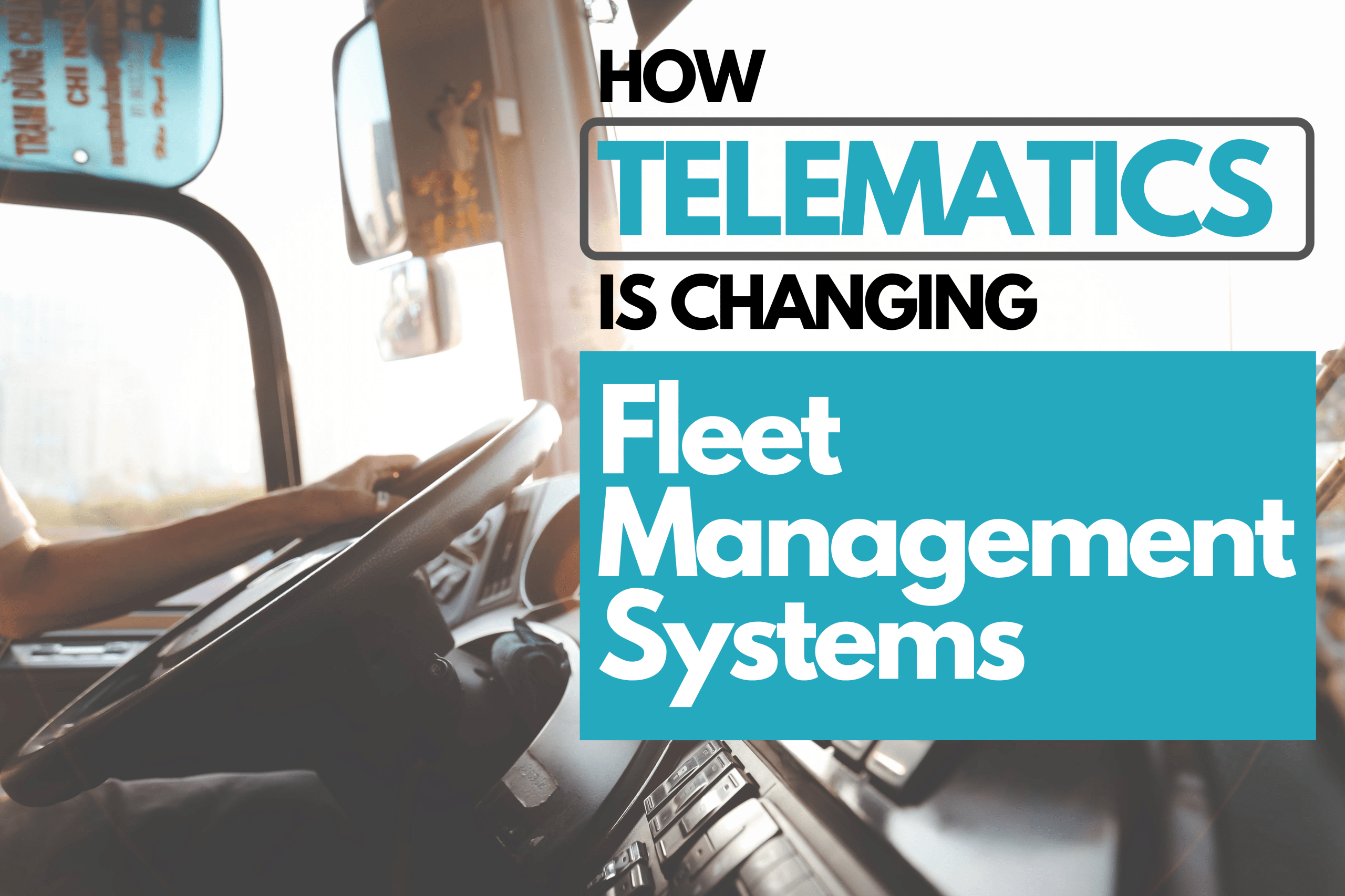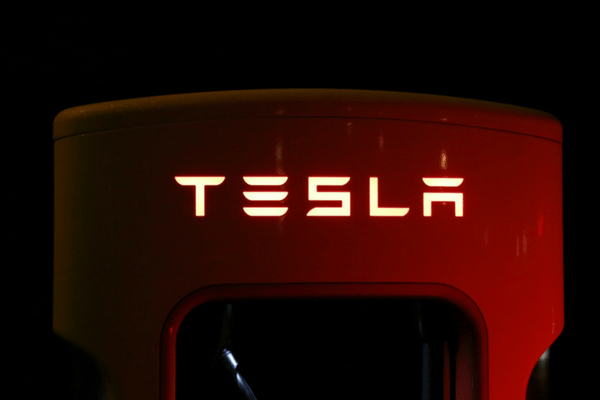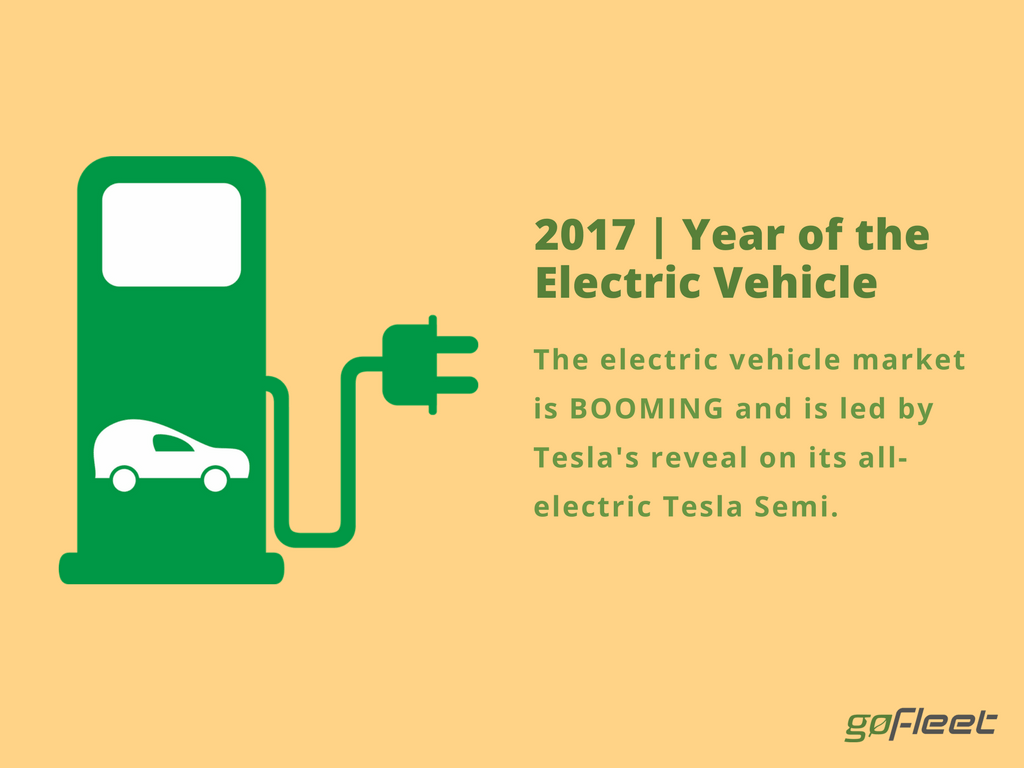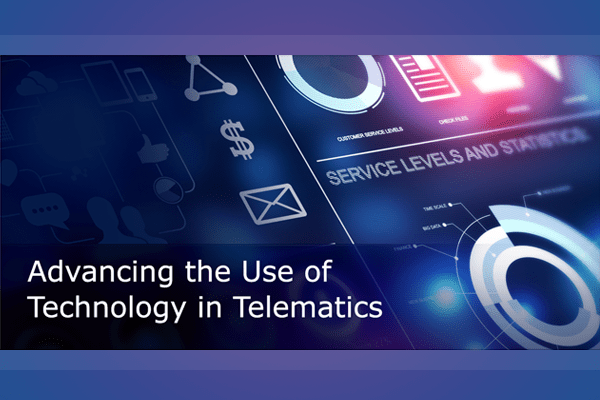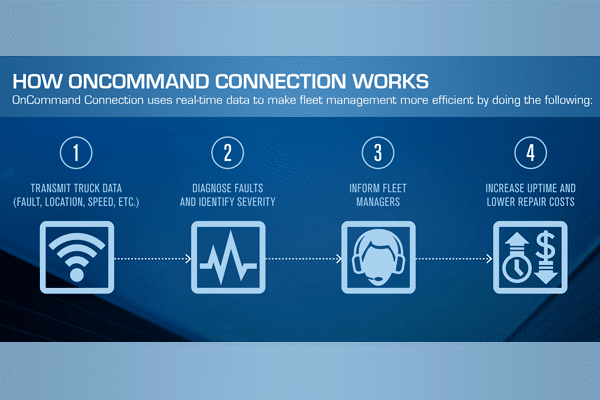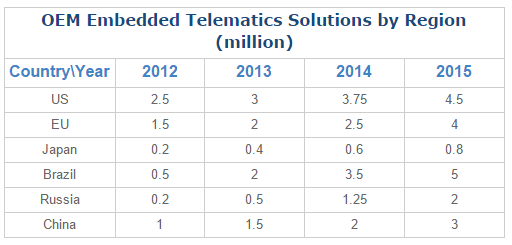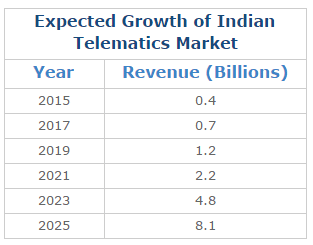Introducing Telematics
Telematics systems provide complete fleet management solutions for businesses big and small. Installing telematics fleet management systems enables the complete tracking of vehicles from optimizing vehicle maintenance to improving customer service. Telematics fleet management solutions benefit businesses by improving efficiency, lowering operating costs, and promoting better driver safety.
Vehicle telematics systems use a combination of a GPS receiver, a telematics device, and communication devices. These devices monitor and relay important information on vehicle use. In some ways, you could call telematics systems the “black box” of the vehicle industry.
In this article, you will learn exactly what a telematics system is. You will also find out how these technological solutions can improve corporate fleet management.
What is Telematics?
The term “telematics” is a combination of telecommunications and informatics. In the context of fleet management systems, telematics allows information to be sent from vehicles to a centralized database. Fleet managers are then able to analyze and process the information to develop transport solutions and optimize the use of company’s resources.
The main industries that benefit from telematics solutions are logistic companies, insurance companies, and businesses who operate commercial fleet vehicles.
For example, vehicle telematics systems can record information such as location, driving speed, idling time, fuel consumption, tire pressure, vehicle faults, and driving habits. Business owners and managers are then able to schedule vehicle maintenance, use resources more efficiently, and improve their employee’s driving habits.
As a result of these reports and diagnostics, investing in telematics systems can result in great savings in transport operating costs.
How Does Telematics Work?
The main components for a telematics system in a car or other vehicle to work are:
- a GPS telematics antenna
- a telematics device that includes an accelerometer
- a SIM card to transmit data over a cellular network
Due to these components, telematics captures areas such as productivity, driving habits, and diagnostics.
Productivity
The GPS telematics system shows in real-time and records data such as speed, location, and types of roads the driver uses.
Driving Habits
In addition to monitoring productivity, telematics devices uses sensors to record driving habit data. For example, suburban fleets may use telematics to monitor and reduce risky driving habits such as harsh braking, harsh cornering, fast acceleration and speeding.
Diagnostics
Because the vehicle telematics “black box” is connected to the vehicle’s onboard computer, diagnostic data is also recorded as part of the intelligent telematics reporting.
Telematics Solutions for Fleet Management
Why are fleet management telematics a standard part of the industry? The biggest reason is because telematics goes hand-in-hand with effective fleet management.
Fleet managers are responsible for goals such as optimizing fleet resources, improving customer service, increasing safety, and monitoring maintenance. Telematics provides data for fleet managers to realize all of those goals.
Telematics Navigation: Vehicle and Trailer Tracking
There are multiple ways that GPS telematics can be used as tracking software for fleet management solutions.
For example, logistics companies can work out the best route to take to increase delivery time or maximize fuel efficiency. Or, real-time GPS fleet tracking can help dispatch the nearest driver to a job or incident (in the case of emergency services).
However, vehicle tracking is also useful to locate stolen cars, trucks or trailers. In fact, if a trailer or vehicle is moved without authorization, an alert can be sent instantly to the fleet manager.
Telematics in Cars: Maintenance Monitoring
Telematics devices improves maintenance schedules and extends vehicle lifespans.
For example, by using fleet telematics solutions, businesses can schedule preventative maintenance and track engine hours. Diagnostic alerts can also help repair small issues before they develop into major costly repairs.
Due to the fact that vehicle telematics helps keep cars in a safe operating condition, they also go a long way to improving road safety.
Fleet Telematics: Safety Reporting
By analyzing reports on driving behavior, business owners can minimize the risks caused by poor driving habits.
Apart from telematics monitoring driver behavior, there are many telematics device add-ons that can boost safety. For example, devices that prevent driving distractions, collision avoidance systems, and lone worker safety solutions all help improve safety.
Telematics solutions are also effective to increase productivity and safety in large industrial vehicles. For example, the Go RUGGED telematics device has been specifically designed for vehicles such as farm machinery, off-road vehicles, dump trucks, and mining equipment.
It is also good to remember that bad driving habits don’t just put other road users at risk. They also shorten the life cycle of the car by putting the vehicle under unnecessary wear and tear. Fast acceleration and harsh braking also negatively impact on fuel efficiency.
In the event of an accident, GPS telematics devices along with dash cams can provide accurate data to reconstruct the event. This can help to save money on falsified insurance claims. What’s more, by installing telematics devices on fleet cars, companies may be able to save money on insurance premiums.
Intelligent Telematics Solutions
Apart from being useful in tracking driver habits and optimizing fleet vehicle management, there are a number of practical ways that telematics work.
Using telematics for predicting traffic conditions can help drivers plan their best route to avoid congestion and hazards. This can not only help companies continue to provide good customer service but it can help to minimize driver stress and improve job satisfaction.
Intelligent telematics fleet solutions also save money on fuel costs. Choosing the most effective route, avoiding idling in traffic, and driving at reasonable speeds all improves fuel efficiency.
Fleet Management Telematics Use Case
Lastly, let’s explore a 2019 use case. Consider one of our recent clients. Like many other fleets, they were a second-time telematics user. Also similarly to other fleets, they understand that using telematics is much more than tracking vehicle location.
For that reason, their use case was more complex. They wanted a custom solution that tracked their vehicles, actionized vehicle data, and provided rich data. As a result, our product team designed the following solution.
GO9 Device
Firstly, our product team provided the brand-new Geotab GO9 tracker – an updated version of the Geotab GO7. The client was one of the world’s first GO9 users. In addition to providing rich telematics data, the GO9 is future proof and will be able to handle future fleet management needs such as tracking electric vehicles.
Automation Software
Secondly, our product team developed and provided automation software. Automation software actionizes telematics data by assigning tasks to telematics triggers. For instance, our client used ZenduMA to automatically assign a mechanic job whenever a driver reported a vehicle defect on their DVIR.
Rich Data
Thirdly, our product team provided rich data by providing a camera solution. ZenduCAM provides valuable video footage to make sense of numerical data. For instance, our client started using footage to follow up on safety incidents and unexplained vehicle damage.
Key Takeaway
Hence, the key takeaway is that fleet telematics is now more than collecting vehicle data. In 2019, fleets expect telematics to provide rich data and to actionize that data into business activity.
Sources
Business Fleet
Telematics Helps Materials Placement Company Reduce Costs
Research Gate
A Telematics Application for Stolen Vehicle Recovery Using On-Device Position Fixing
